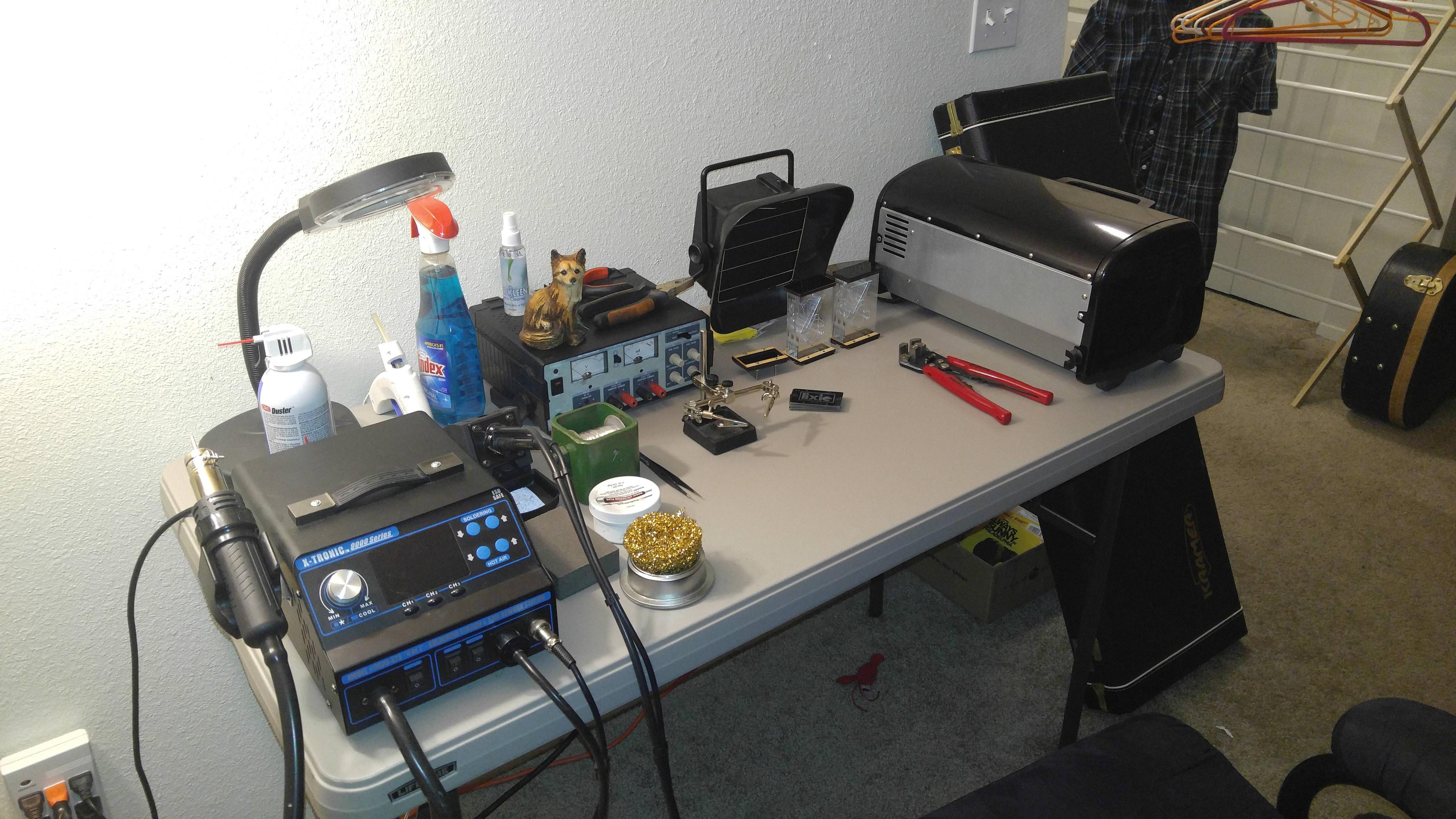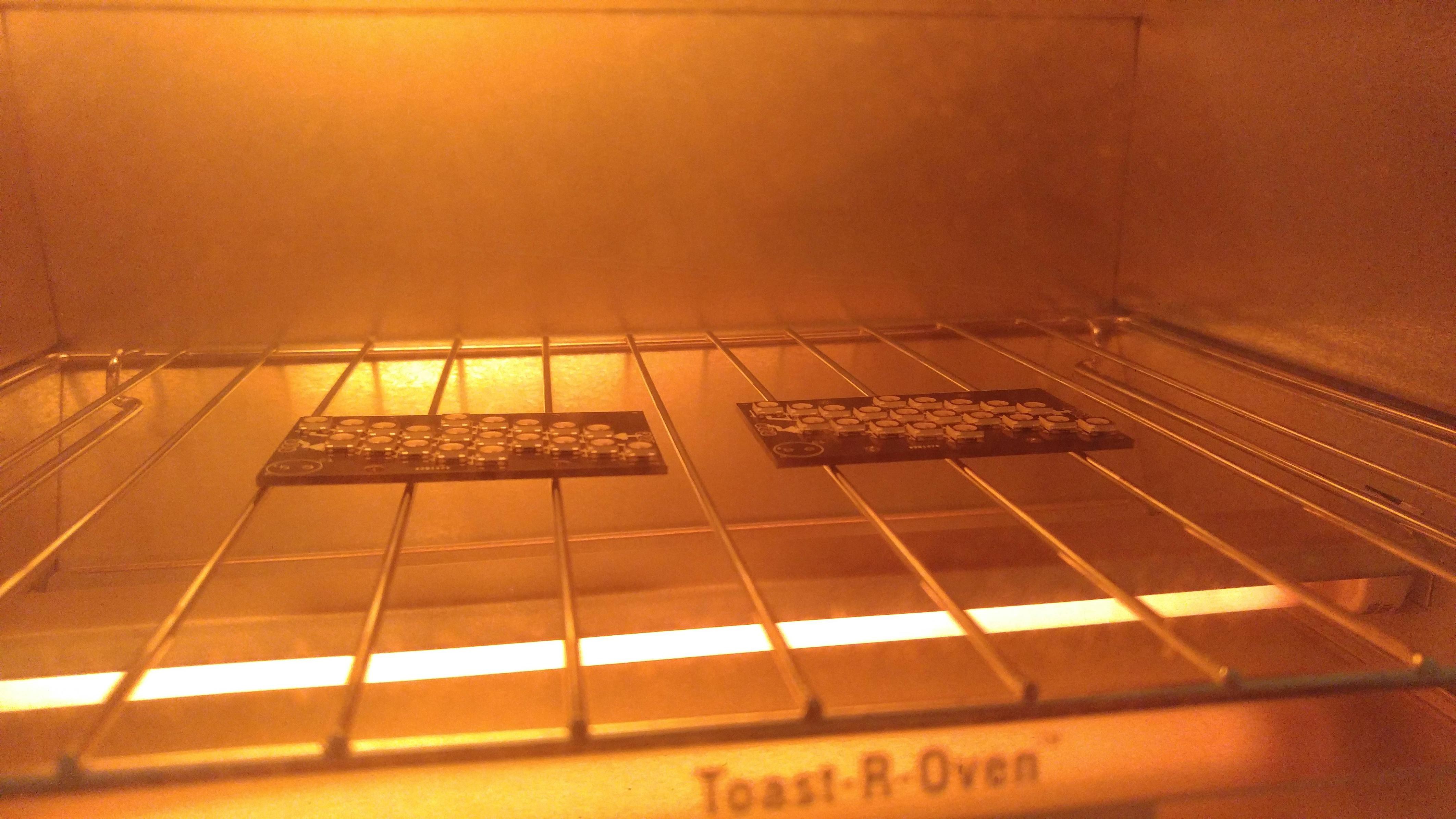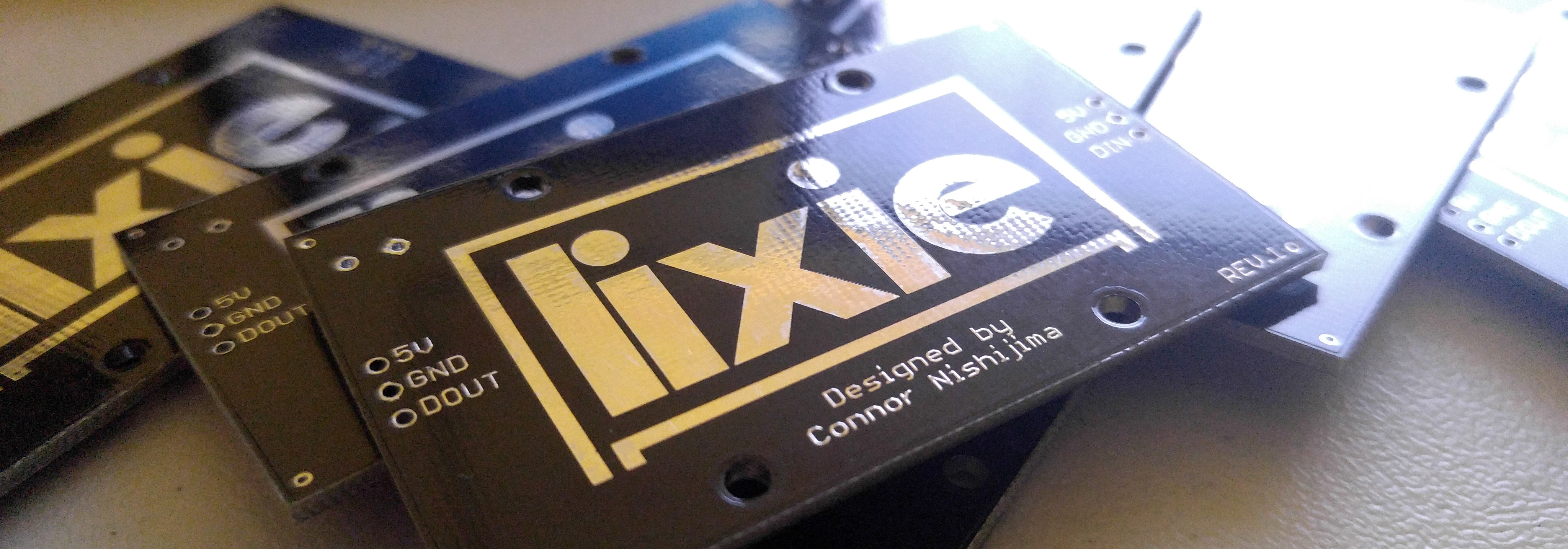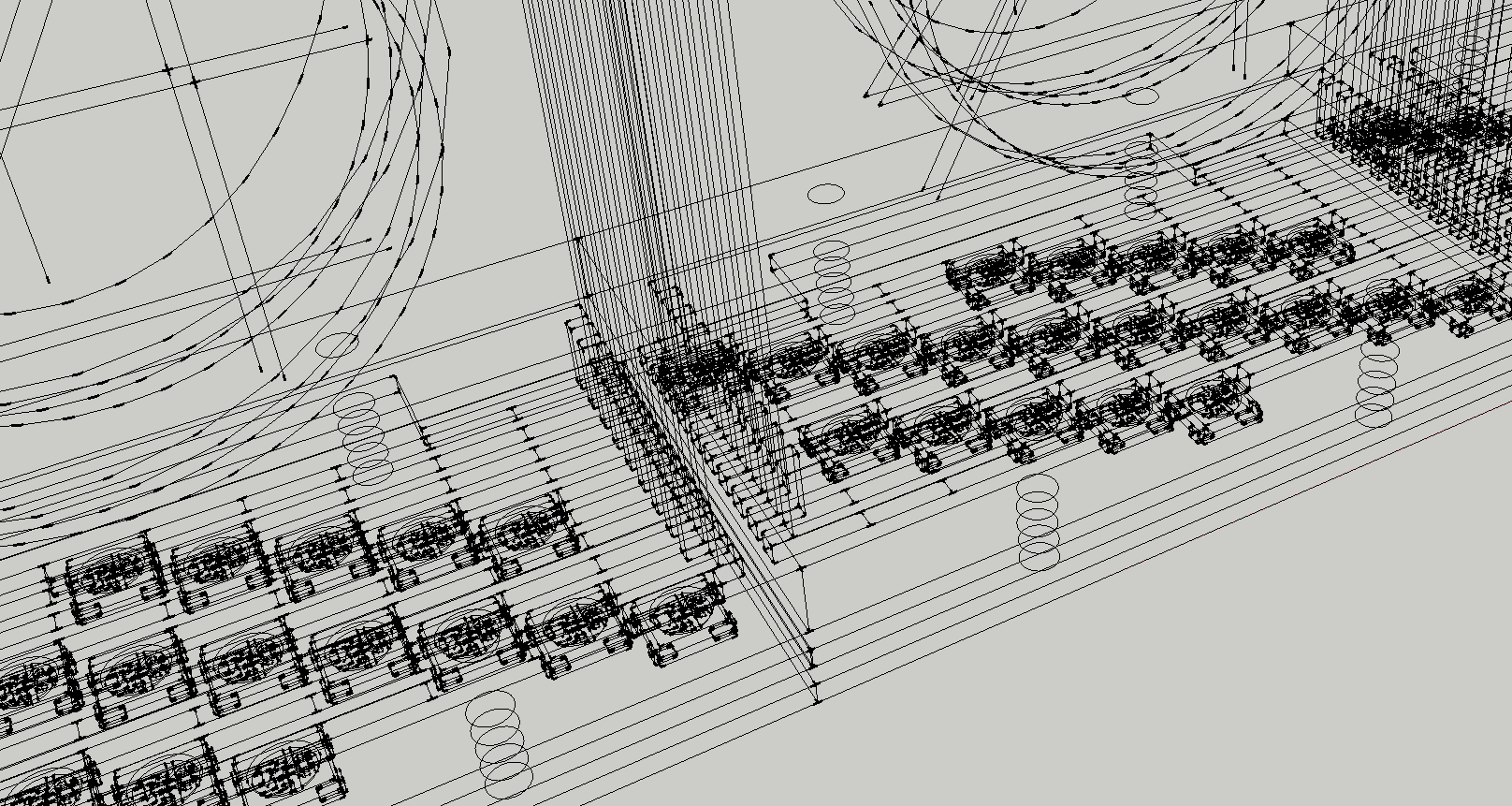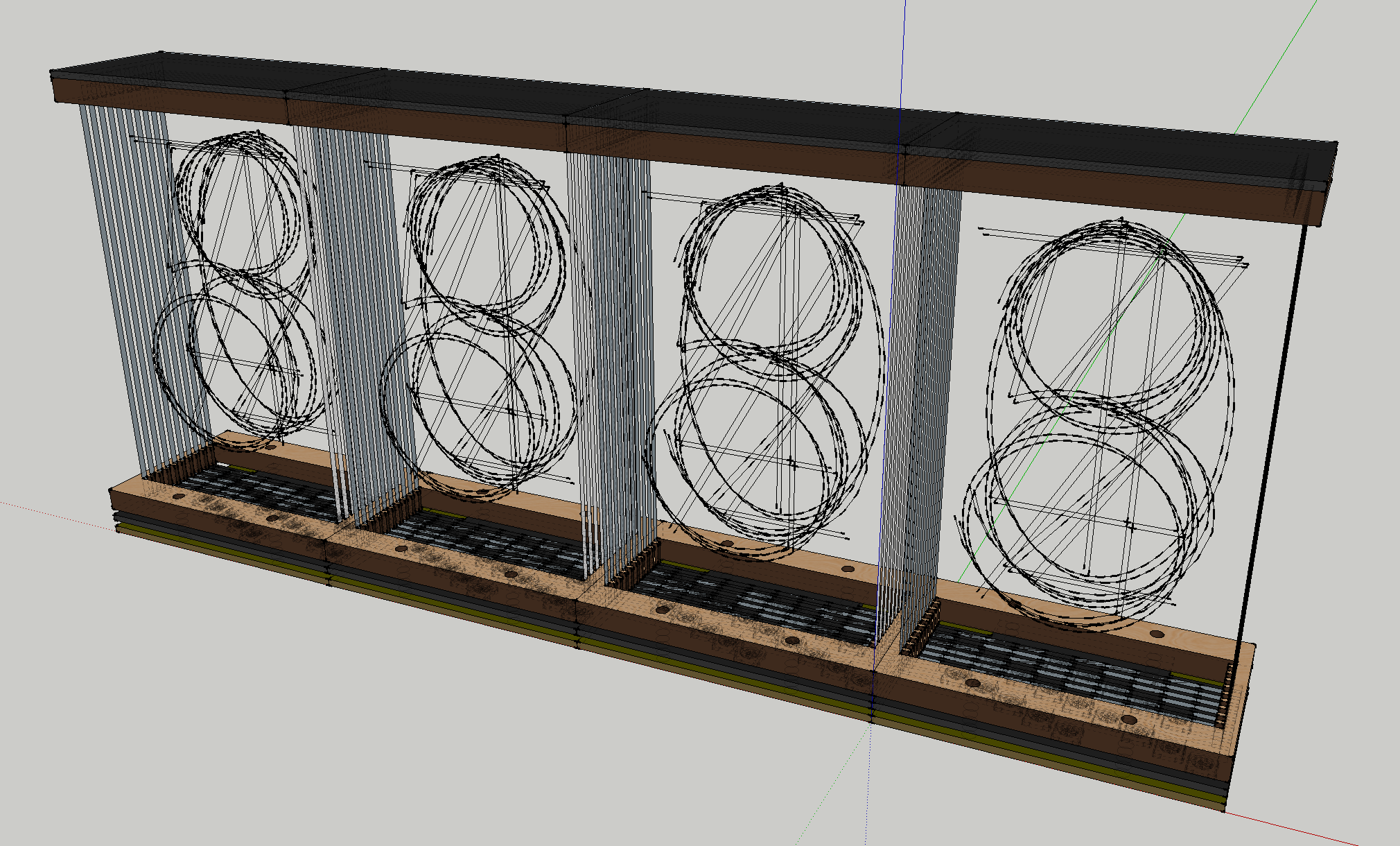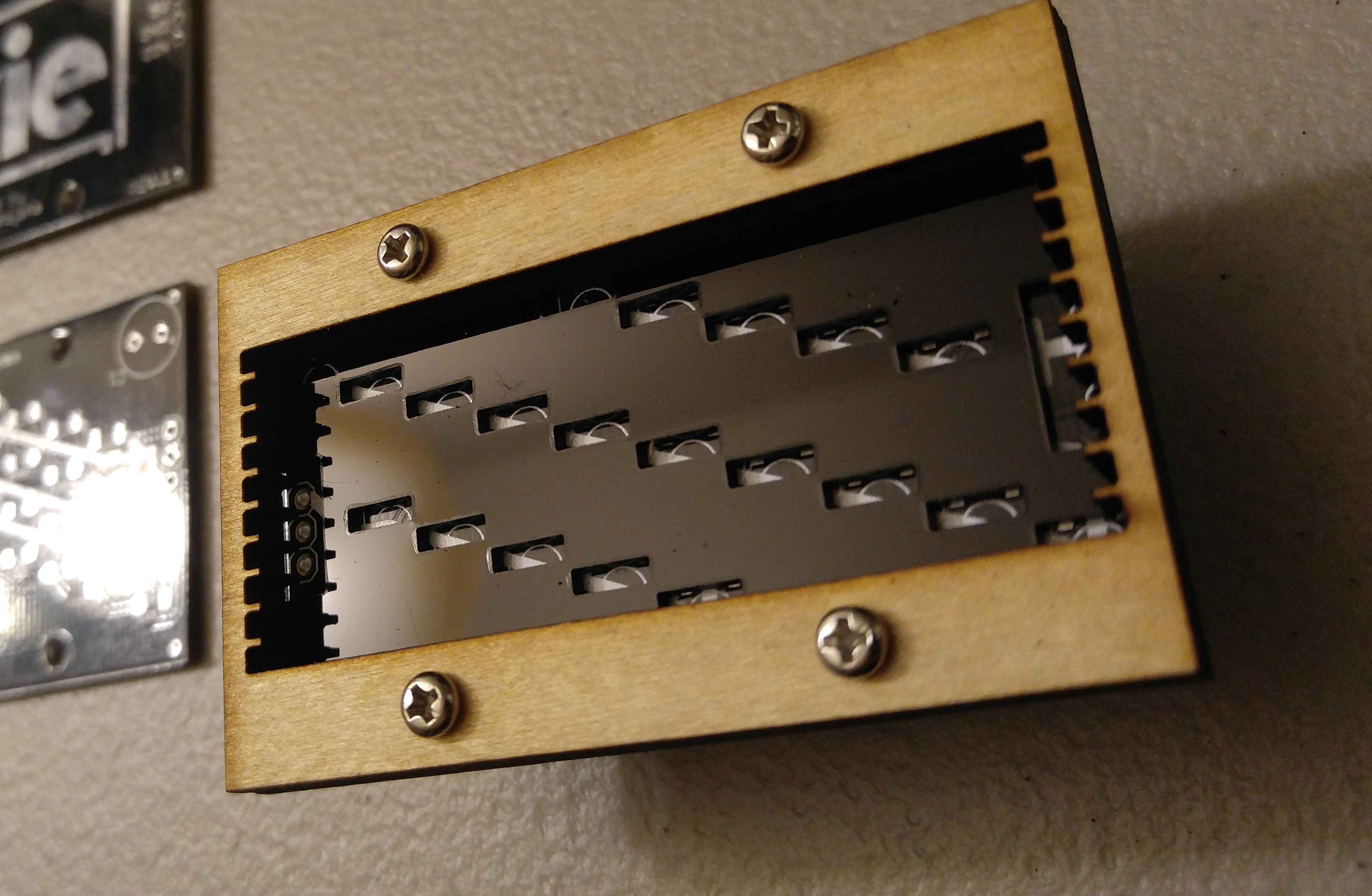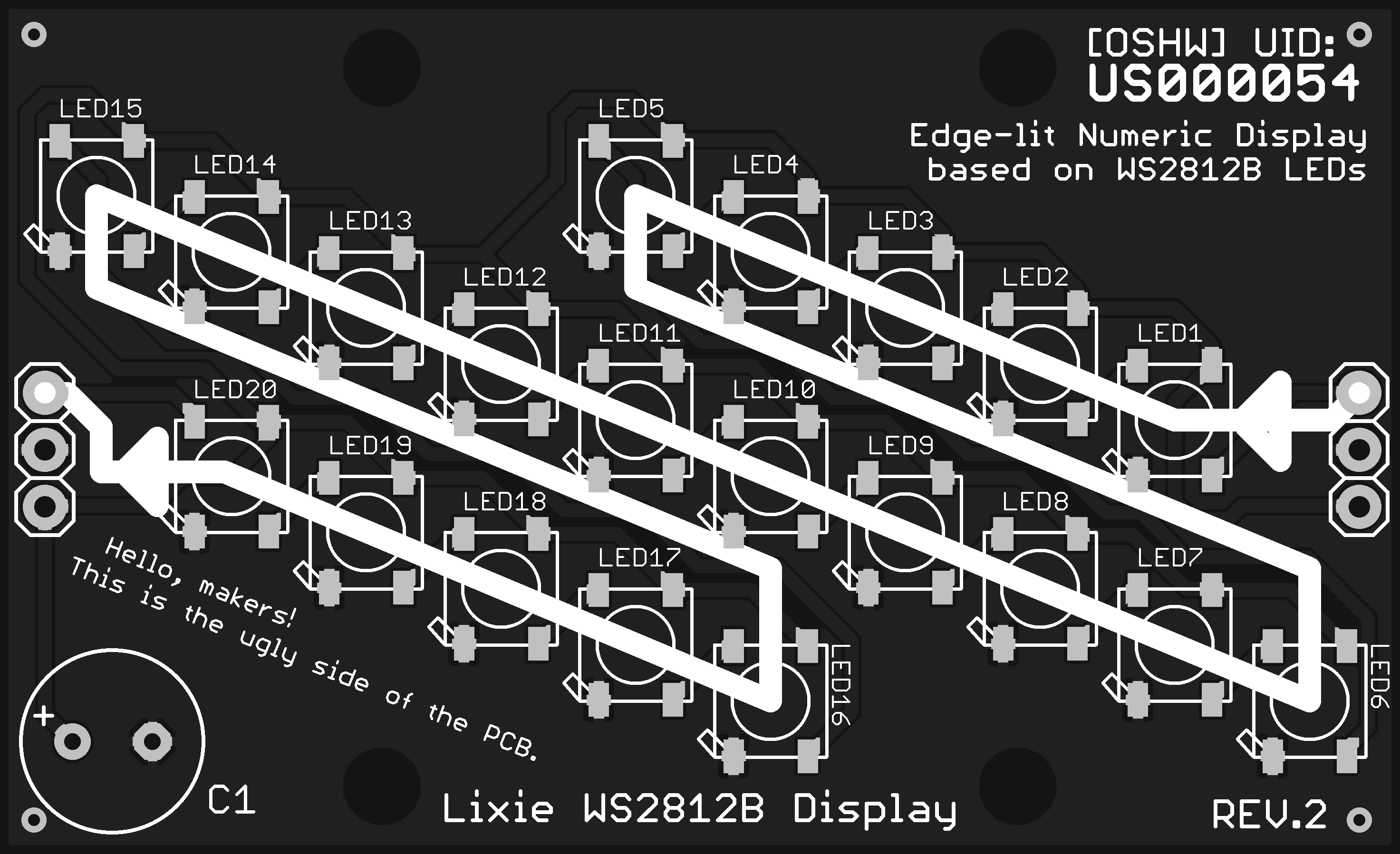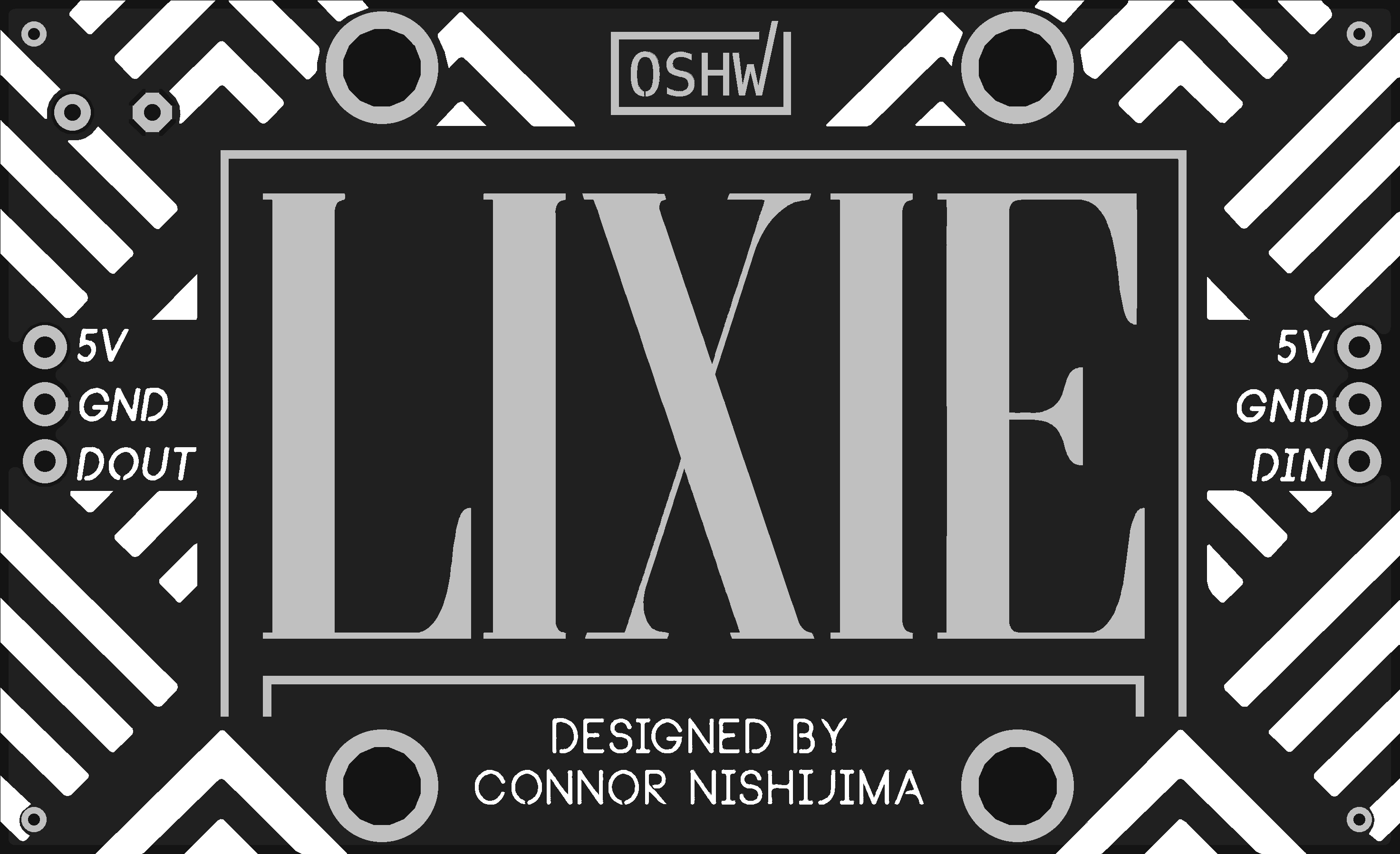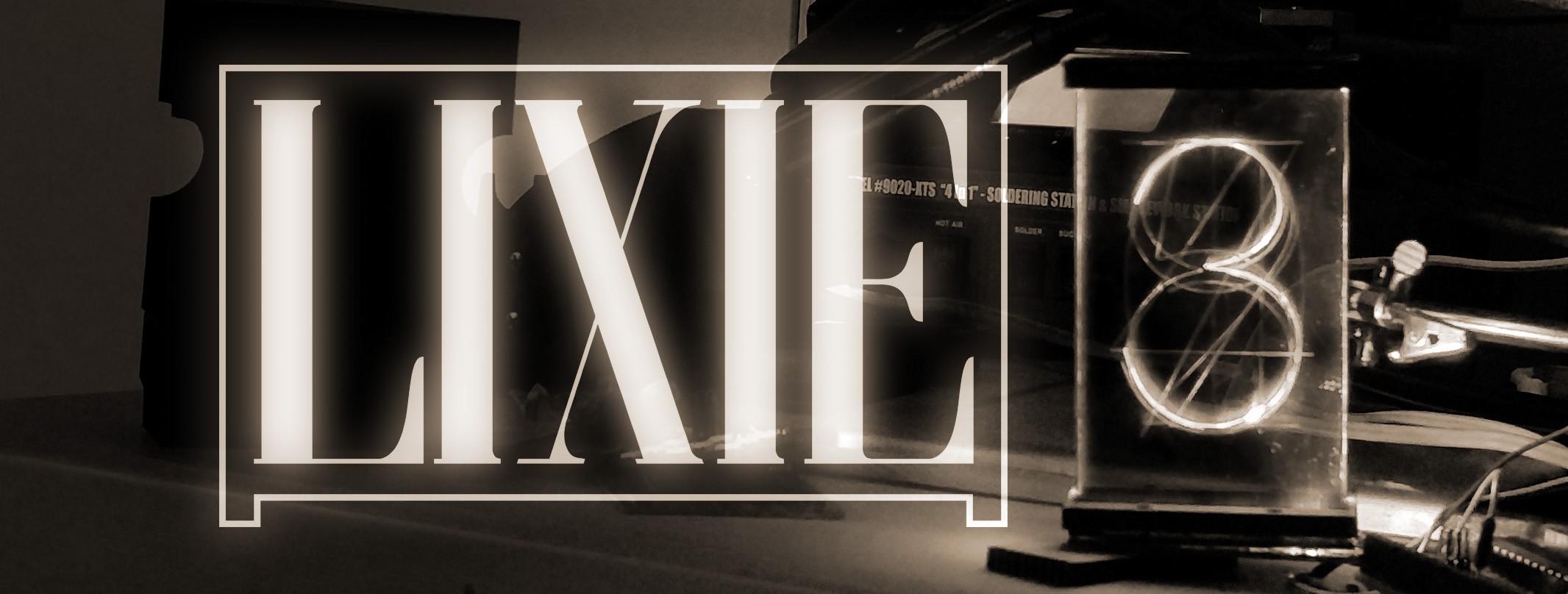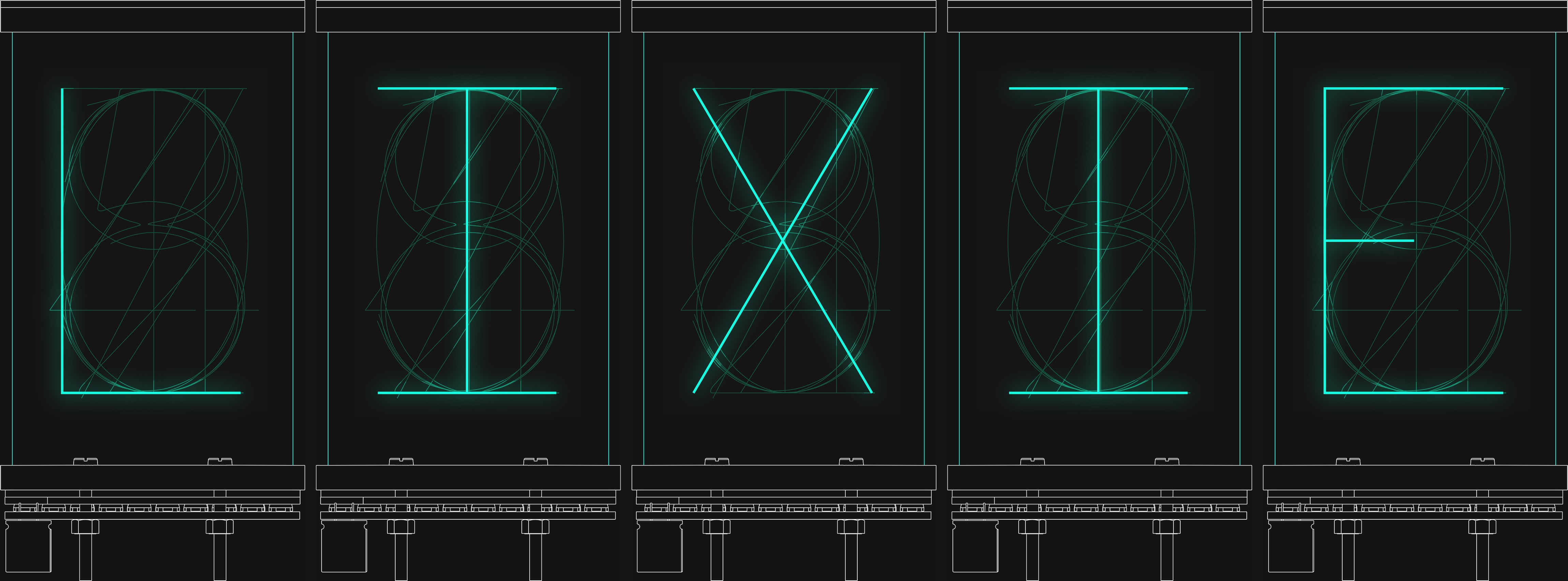-
Seeing Double - and horrible speaking skills!
12/17/2016 at 06:48 • 0 commentsI've never been one to deliver lines well from a script, but here's a more personal update delivered in video! :)
Here we see the awesome black WS2812B LEDs! Before ordering, I didn't even know they made these! Here is a view of two Lixies doing the "color count" test:
Bought a second card table just for assembly!
And here are some Lixies cooking in the oven! I highly recommend reflow soldering if you've never tried it, you'll save hours of your life with every product! ;)![]()
![]()
And here's a 360 view of a Lixie assembled with nitrile gloves in a clean environment like yours will be:
Once again, thank you all for you support, and feel free to join the Lixie waiting list if you want to be notified on release in January!
- Connor Nishijima
-
Officially Open Source!
12/12/2016 at 02:49 • 0 comments![]()
Today, the Lixie Display was officially deemed open by the Open Source Hardware Association! (OSHWA for short.) This means that a member of the OSHWA board has manually checked that I'm properly sharing all documentation in an open, (Fritzing) or "free" format. (Eagle Free Version)
Because of this, I'd like to cover two things:
- The OSHW certification process
- Lixie's open hardware!
![]()
OSHW Certification
After seeing this wonderful talk by SparkFun founder Nathan Seidle a few months ago, I decided that the Lixie display would be as open as possible. There's nothing you can do to stop a copy cat, so you might as well be friendly!
If your idea can be sold, it will be.
On December 9th, I submitted Lixie's documentation (available on the Github) to OSHWA through their online form. The "Certification Mark License Agreement" took about 30 minutes to complete with reading to make sure I wasn't signing my soul to the devil, but I was very pleased with the terms. For those of you unfamiliar with the OSHW mark, it's fairly new and very cool!
The OSHW logo is a new iteration of the Open Source Hardware "Gear Logo". This gear is still valid, but has one issue: anybody can use it. This means that people who weren't open sourcing at all were using the logo purely for promotional reasons. (Dave Jones has a great video about this.) The new [OSHW] logo solves this by requiring manual approval of it's use per project with their certification process.
OSHWA replied within 48 hours, on a weekend, with my official OSHW UID of "US000054"!
Please note however, the OSHW mark is *NOT* a licence protecting the hardware from being closed by a third party, it's just a certification mark. You'll still need to bundle in a licence like The GPL v3 I use on all of my work.
![]()
Lixie's Hardware
In the spirit of being as Open as possible, let's take a thorough look through how Lixie works!
Concept
Lixie works by shining light through the edge of a clear acrylic. When the light hits an engraving or edge, it scatters in a different direction, and lands in your eye! This allows the flat surfaces of the acrylic to stay clear, and have only edges light up! Now put ten pieces in a stack, each marked with a different number 0-9, and you can show each number individually, on a clear surface!
To do this well, we need two things: plate separation and a light filter. Adding a gap between plates prevents light from jumping between them, and a filter at the base prevents an LED from lighting any plates but the one it's supposed to.
Plates
Each of the ten plates has a number on it, 0 through 9. For maximum light output, these numbers are actually cut all the way through the acrylic, with little connected areas left on numbers like "9" so that no areas are completely cut out. (Think pumpkin carving). Most laser cutters are able to produce cuts of a certain depth as to not completely cut the material, but I use Ponoko for cutting these, which only allows very shallow engraving or full-blown cutting. Each plate is separated by a 1mm air gap.
Filter
![]()
A light filter is used to prevent LEDs from lighting plates they shouldn't. Each plate has two legs leading down to two slots, over two LEDs. This filter, and the PCB beneath it, are specifically designed so that the three anodes of the 5050 RGB LEDs are centered under the slots.
Printed Circuit Board
The Lixie actually has a very simple PCB, with some very specific dimensions. To fit all of the LEDS in, they have to be staggered diagonally. Each acrylic digit has the two lightpipe legs in different spots for this reason. As mentioned above, the LEDS are also placed JUST right so that the anodes for red, green, and blue are centered under the filter slots.
![TOP VIEW]()
![]()
![]()
Conclusion and Waiting List
I know some of you are waiting very anxiously for Lixie to go on sale, and I have good news! You can hop on a waiting list for the Tindie listing today! Sales will be shipped in the order received, so if you want to be an early adopter, go ahead! :) You won't be charged anything yet, you'll just be the first to know when Lixie is released. :)
https://www.tindie.com/products/connornishijima/lixie-an-led-alternative-to-the-nixie-tube/
Thank you all again for the wonderful support, and for helping me make the coolest display you can buy!
- Connor Nishijima
-
Hello again, world!
12/08/2016 at 19:54 • 0 comments![]()
Since we last talked, Lixie's software has undergone some major changes! Let's jump in.
- The library has been rewritten from scratch! This includes some big improvements like...
- LED states have been reduced to almost 1/8th their original size! Before, each binary state was stored greedily in it's own byte. Sloppy programming. This meant the LED states of a single digit took 20 bytes! :( Now, a much better system of storing the binary states in the actual BINARY of a byte is here. A single digit now only takes 3 bytes! (20 states, 4 bits left over)
- Lixie now has HSV color space as well as RGB! Use either that you'd like. :)
- Numbers are no longer converted to char arrays for pushing out the data, it now does this mathematically with division.
Along with software changes, a few have been made to the project itself. I am considering including a custom cut piece of black cardstock that users can shimmy into the assembly behind the rear digit to increase contrast if necessary. If you don't need it, it makes for one cool transparent display!
Also, somebody requested I show the Lixie in a brighter environment so we could see how it looks during the day! Here is a Lixie (with all 10 digits now) cycling through colors in the daytime!
More details are to come! Thank you all for the awesome support so far!
"Lixie", an LED alternative to the Nixie Tube
Always jealous of people who could afford big Nixie Tubes, I rolled my own alternative with WS2812Bs and laser cutting!
 Lixie Labs
Lixie Labs